The octal number system is a number system which uses eight digits to express any number. The digits used are 0, 1, 2, 3, 4, 5, 6 & 7. All the other digits can be expressed using these 8 digits. You will never see 8 or 9 in any of the numbers in the octal system. The base of the octal number system or radix is 8. This is because the total number of digits in the number system is 8.
The positional value of the digits in the octal system can be written in terms of 8 raises to the power the positional number. The positional number increase in from 0 to subsequent terms when moving leftwards from decimal point.
The pictorial representation shows the same.

On the contrary, the positional number decreases from -1 to more negative values. Thus, using these powers of 8, the decimal equivalent of the octal number can be calculated.
Significance of Octal Numbers
Digital systems use binary numbers as input and process that result and generates binary number as output. Digital circuits understand only 0 and 1. They don’t understand any other digit except 0 & 1. Thus, binary numbers are crucial for the digital system.
The drawback of using binary numbers is that it is quite difficult to handle the long string of binary numbers. As it may create an error. Thus, octal number system was developed. The length of the octal number system is 1/3rd of that binary number.
Thus, if we will use octal numbers in digital systems, it will be beneficial for processing as well as for displaying output. The output of the digital devices will be compact and error free if an octal number is used for processing.
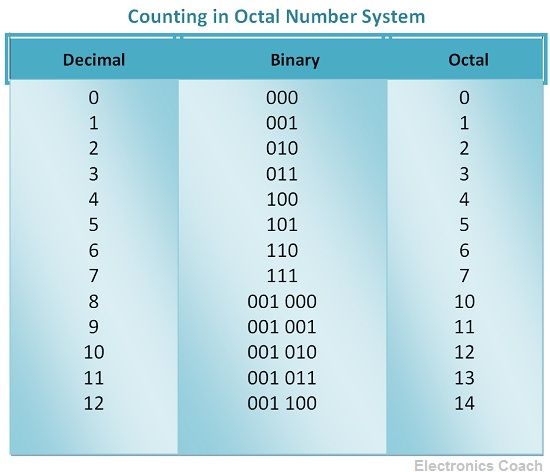
The base of the octal number system is 8. It can also be written as 2 to the power 3. The length of the octal number system is 1/3rd. Therefore, each octal number can be written as three digit group of bits.
Conversion System
For processing of digital systems using octal number, we need to convert from binary to octal and vice versa.
Binary to Octal Conversion
A binary number can be converted into octal by making the group of three digits starting from LSB and moving towards MSB. If the group of three digits cannot be formed in the digits approaching MSB or even with MSB, you may add the number of zeros as per the requirement of digits so that it can also form a group of three digits.
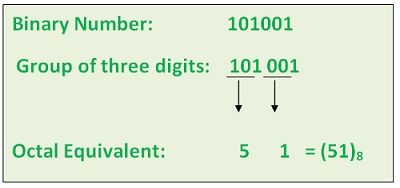
If the binary number also consists of a decimal point, then we need to form a group of three digits at the left side of the decimal as well as towards right side of the decimal point.
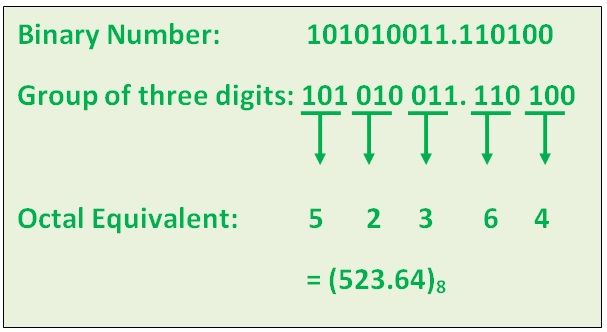
After forming the group of three digits, write the octal equivalent of the every group of three digits.
Octal to Binary Conversion
Each digit in the octal number system should be written in three binary digits groups. The string of binary numbers thus obtained is termed as converted binary from octal. In case if the octal numbers also include decimal point between them then write every octal digit in a group of three binary numbers.
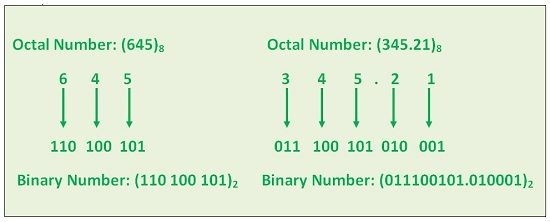
Thus, the string of binary numbers is the required answer.
Decimal to Octal Conversion
The decimal number can be converted into an Octal number by using double dabble method. This method involves the repeated division of the decimal number by 8 till we get 0. Then, write the binary digits in reverse order, i.e. from bottom to top. The bottom digit will be LSB, and top digit will be MSB.
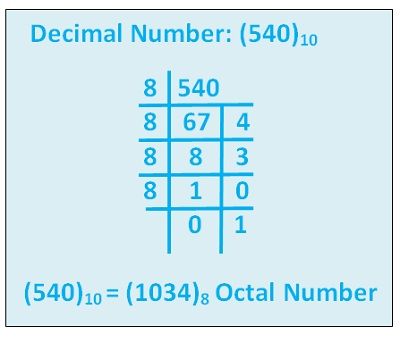
If the decimal number consists of a decimal point, then the number string before the decimal point will be converted into octal using the above method and the number after the decimal point will be converted into octal by successively multiplying the digit with 8.

Octal to Decimal Conversion
The octal number can be converted into the decimal by multiplying each digit of octal number with, 8 raised to the power of the positional value of the digit. Then, by adding all the numbers, we can obtain the decimal equivalent of the Octal number.
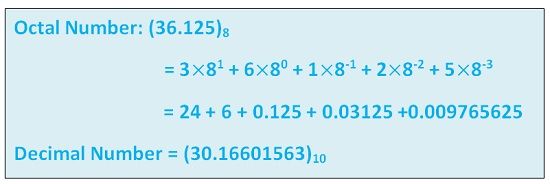
Thus, the decimal equivalent of an octal number can be obtained by the above method defined in the diagram.
Leave a Reply